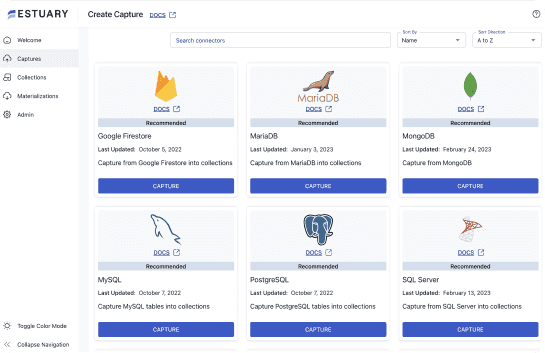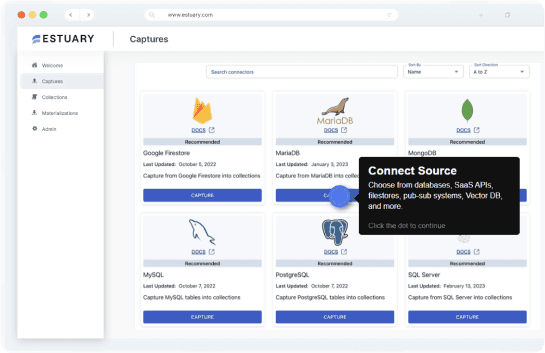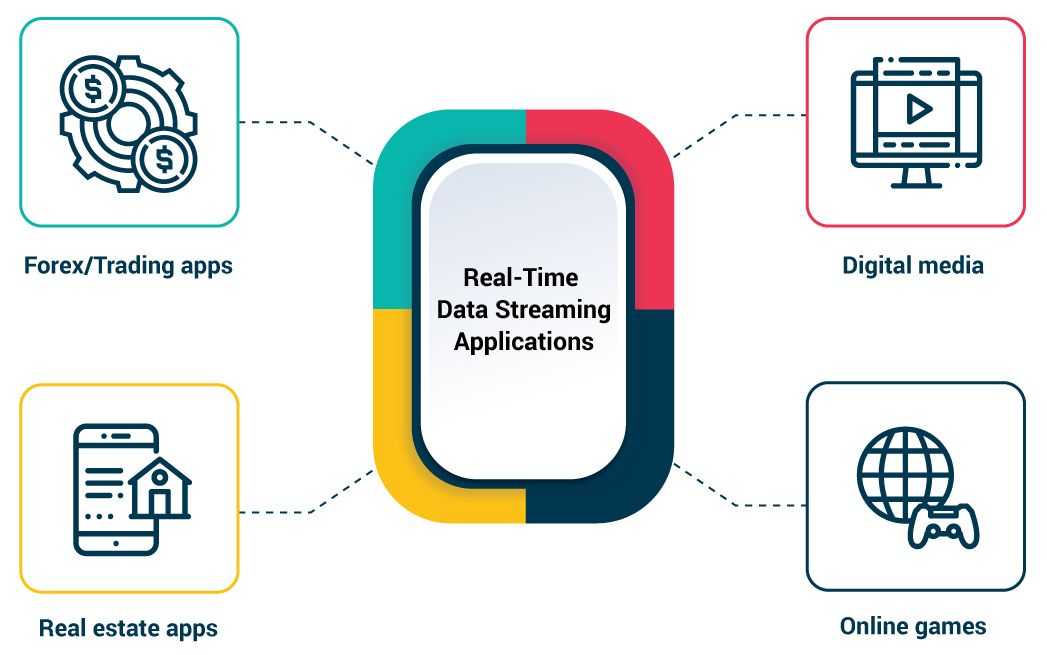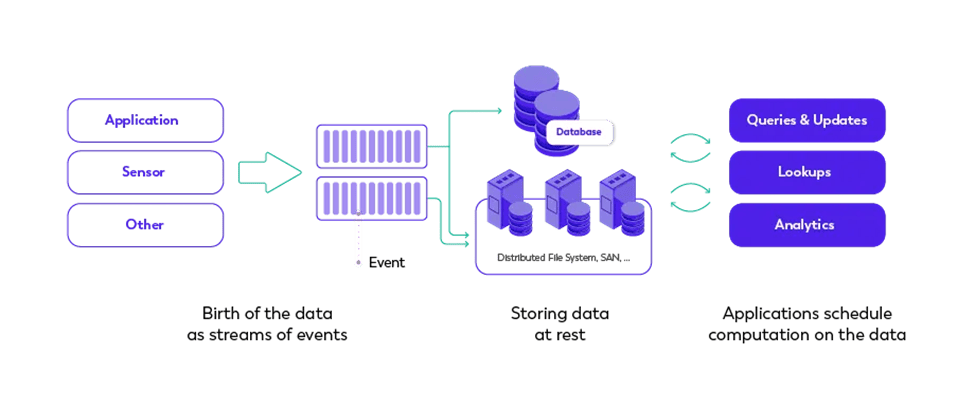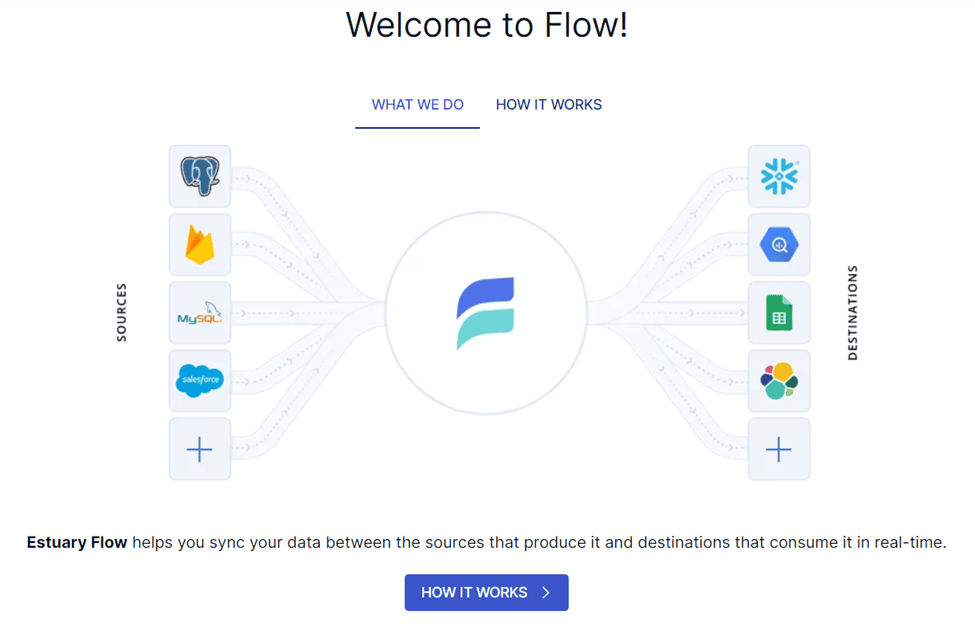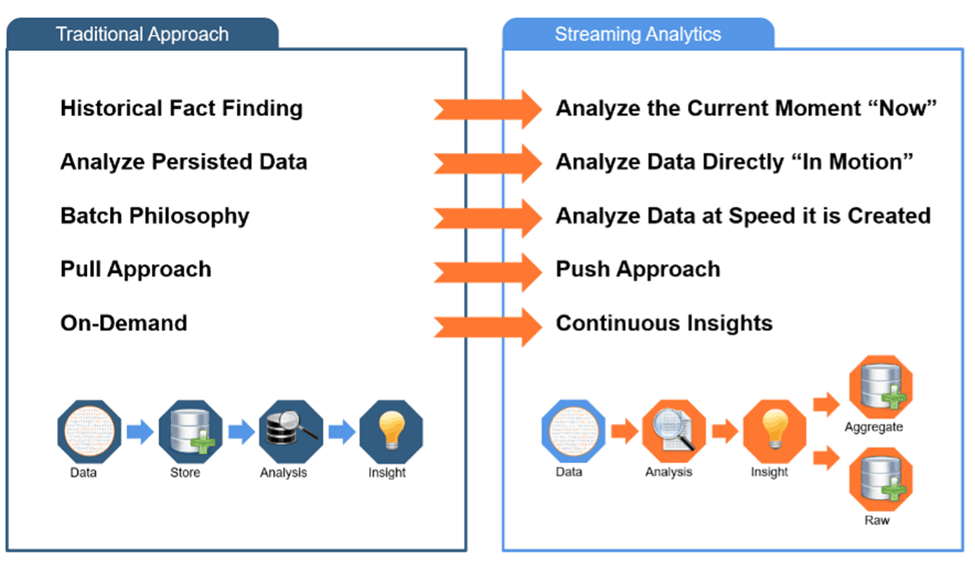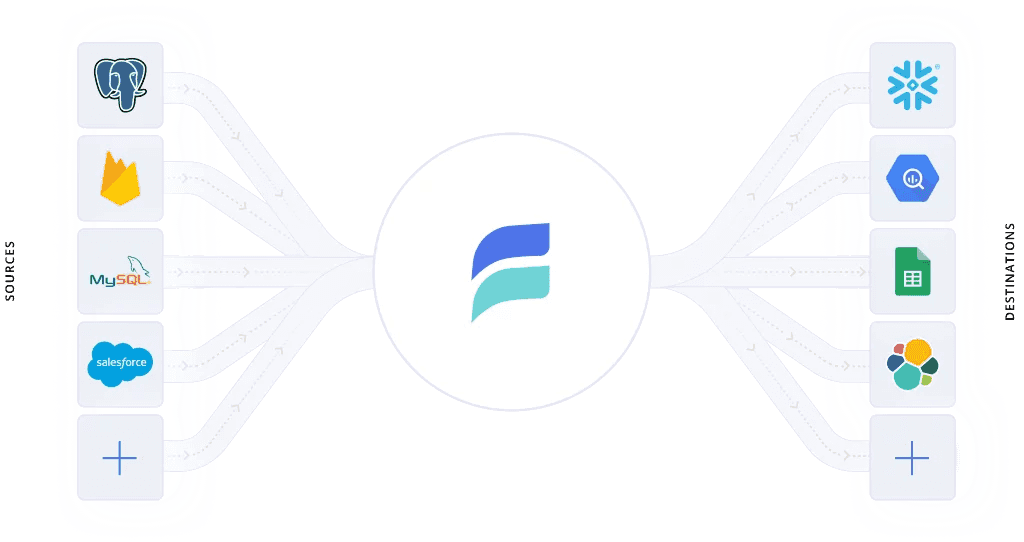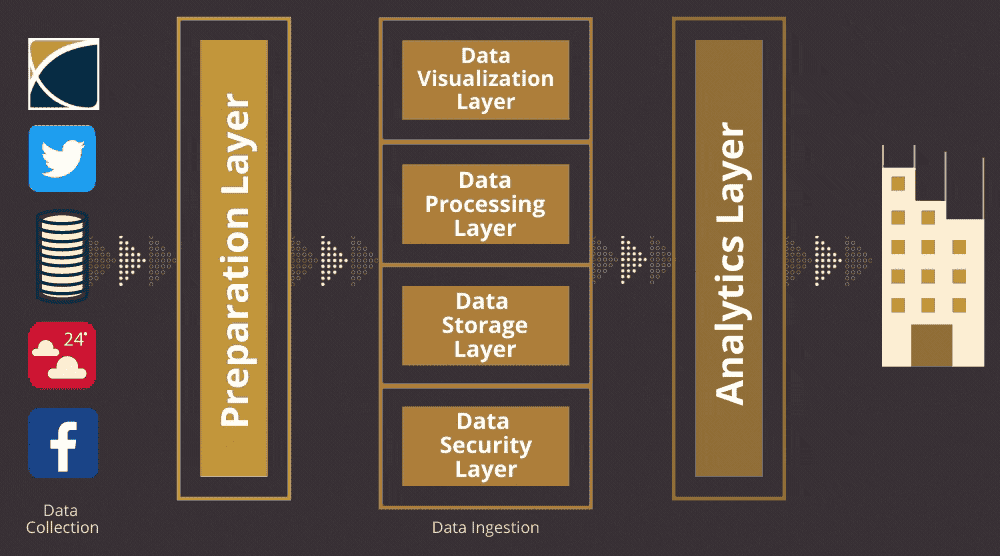
Data is being generated at an unprecedented rate from IoT sensors, mobile devices, servers, applications, and security logs. To make sense of this data deluge, businesses need more than just traditional batch systems — they need a way to ingest, process, and act on data the moment it’s created.
That’s where real-time data streaming comes in.
Real-time data streaming is the continuous transfer and processing of data as it’s generated. It enables organizations to detect anomalies, personalize user experiences, make timely decisions, and respond to events instantly — all without waiting for batch cycles or manual ETL jobs.
Unlike traditional pipelines that collect and store data before processing it, streaming architectures allow you to consume, enrich, transform, and analyze data continuously, as it flows through your systems. This means you can act on data in motion, rather than data at rest.
In this comprehensive guide, you’ll learn:
- What real-time data streaming is and how it works
- The core components of a streaming data architecture
- Popular tools and platforms used to implement it
- Benefits of adopting real-time pipelines
- Real-world use cases across industries
Whether you’re a data engineer, architect, or decision-maker, by the end of this article, you’ll understand how to leverage streaming to improve operations, unlock actionable insights, and gain a competitive edge.
Ready to unlock the power of data in motion? Let’s dive in.
What Is Real-Time Data Streaming?
Real-time data streaming refers to the process of continuously collecting, transmitting, and processing data the moment it’s generated — often within milliseconds. Rather than waiting for batches of data to accumulate, this approach enables immediate analysis and action.
This is essential for industries where latency is critical, such as:
- Fraud detection in financial services
- Predictive maintenance in manufacturing
- Personalization in eCommerce
- Logistics and route optimization
- Cybersecurity monitoring
How It Works
In a real-time streaming system, data flows from various sources (like IoT devices, databases, or APIs) into a stream processing engine that transforms and analyzes the data on the fly. The insights are then delivered to downstream systems — such as dashboards, databases, or applications — in near real time.
This lets you:
- Detect anomalies and trends immediately
- Respond to customer actions as they happen
- Trigger business workflows or alerts with zero delay
Why It Matters
Traditional ETL and batch-based analytics pipelines often introduce delays ranging from minutes to hours. That lag time makes them unsuitable for modern use cases that demand immediate responsiveness.
By contrast, real-time stream processing allows:
- Faster decision-making
- Lower operational risk
- Higher customer satisfaction
- Better business outcomes
Batch vs Real-Time: A Quick Comparison
Feature | Batch Processing | Real-Time Streaming |
| Latency | Minutes to hours | Seconds or less |
| Data freshness | Historical | Current |
| Use cases | Reporting, warehousing | Alerts, personalization, anomaly detection |
| Architecture | ETL-centric | Event-driven |
Real-Time Data Streaming Architecture
Real-time data streaming architecture is the foundation that enables businesses to ingest, process, store, and route data continuously as it’s generated. Unlike batch systems that process data in scheduled intervals, a streaming architecture is event-driven and responsive, designed to support high volumes of fast-moving data.
Here’s a breakdown of the key components in a typical streaming data pipeline:
1. Stream Source
Data for real-time data streaming can originate from a wide array of sources including IoT sensors, mobile and web apps, databases, and other sources.
2. Stream Ingestion
Stream ingestion is the process of capturing and transporting data from sources into your processing system. This component handles scale, buffering, ordering, retries, and serialization.
Popular ingestion tools and message brokers: Apache Kafka, Azure Event Hubs, Google Pub/Sub, Gazette (used by Estuary Flow), Amazon Kinesis
Pro Tip: Tools like Estuary Flow simplify ingestion by providing native CDC (Change Data Capture) connectors, eliminating the need for custom Kafka pipelines and manual schema tracking.
3. Stream Storage
The streamed data needs to be stored somewhere to make use of it later on. You can use stream storage solutions like AWS Kinesis Data Streams, or Estuary Flow on Amazon S3 or Google Cloud Storage, which provide scalable and cost-effective solutions for storing streaming data in either a data lake or data warehouse environment.
4. Stream Processing
These tools are designed to transform incoming data into a structured state so that it can be further analyzed by analytics tools. Processing tools are responsible for tasks such as validation, normalization, and enrichment.
Popular tools to process streaming data include Apache Spark Streaming, Apache Flink, and Azure Stream Analytics.
5. Stream Destination
The analysis generated by the previous components needs to be sent somewhere to derive value from it – this is typically done by sending it downstream to:
- Databases e.g., Postgres
- Third-party integrations e.g., CosmosDB
- Data warehouses e.g., Google BigQuery
- Event-driven applications e.g., AWS Lambda
Here’s how a modern real-time architecture might look:
plaintext [Web App] [IoT Device] [Database]
↓ ↓ ↓
--- Stream Ingestion Layer (Kafka, Estuary, Event Hub) ---
↓
--- Stream Processing (Flink, Flow) ---
↓
--- Real-Time Storage + Materialization (BigQuery, S3, etc) ---This architecture ensures that your data is always fresh, accurate, and actionable, ready to power decision-making and automation across your business.
Real-Time Data Streaming Tools & Technologies You Can Use
To build and operate a reliable real-time data streaming pipeline, you need the right combination of ingestion, processing, and delivery tools. Depending on your use case and technical expertise, you can either assemble your own stack from open-source tools or use a unified platform like Estuary Flow that streamlines the entire pipeline.
Below are some of the top technologies used in modern real-time data streaming:
1. Estuary Flow
Estuary Flow is a unified platform for real-time data ingestion, transformation, and delivery — built for streaming-first workloads and Change Data Capture (CDC).
Key Features:
- Built-in CDC connectors for databases like PostgreSQL, MySQL, MongoDB, and SQL Server
- No-code interface + YAML-based catalog for declarative pipeline configuration
- Real-time transformations using SQL or TypeScript
- Backfill support to bootstrap historical data
- Materializations to data warehouses, databases, and event systems
- Native cloud storage integration (S3, GCS) for collection durability
Why it’s different: Flow replaces the complexity of managing Kafka, Flink, and CDC tools by giving you a scalable, production-ready streaming pipeline out of the box. It’s ideal for teams that want real-time pipelines without managing infrastructure.
Try it free: dashboard.estuary.dev
2. Azure Stream Analytics
Azure Stream Analytics is Microsoft’s fully managed real-time analytics engine. It allows you to process and analyze streaming data from devices, applications, and cloud services.
Pros:
- SQL-like query language
- Deep Azure ecosystem integration
- Scales automatically for real-time events
Limitations:
- Best suited for Azure-centric environments
- Limited flexibility in source and destination connectors compared to Flow
3. AWS Kinesis
Amazon Kinesis is AWS’s streaming platform for real-time data collection, processing, and analysis.
Capabilities:
- Multiple services: Kinesis Data Streams, Firehose, Analytics
- Integration with AWS Lambda, Redshift, and S3
- Reliable ingestion of high-throughput event data
Limitations:
- Complex setup and management for non-AWS users
- Limited transformation capabilities without additional AWS services
4. Google Cloud Dataflow
Google Cloud Dataflow is a fully managed service for stream and batch data processing, built on Apache Beam.
Strengths:
- Unified model for batch and streaming
- Scalable and integrated with BigQuery and Pub/Sub
- Great for data engineering and ML pipelines
Considerations:
- Requires Beam expertise and may involve writing code for complex pipelines
- Not ideal for rapid prototyping or no-code users
5. Apache Kafka
Apache Kafka is a distributed event streaming platform that serves as the backbone for many custom real-time systems.
Advantages:
- Massive throughput and fault-tolerance
- Broad ecosystem of connectors and tooling
- Powerful for building bespoke, event-driven architectures
Challenges:
- High operational overhead and infrastructure complexity
- Requires layering with other tools (e.g., Flink for processing, Debezium for CDC)
Now that we’re familiar with the streaming tools, let’s explore the benefits of real-time data streaming.
9 Proven Benefits Of Real-Time Data Streaming
Real-time data streaming unlocks the ability to respond to events as they happen, rather than after the fact. Whether you're processing millions of transactions, monitoring IoT devices, or analyzing user behavior, real-time stream processing enables faster, smarter, and more agile business decisions.
Let’s explore the key benefits in detail:
1. Real-time Insight
Real-time data streaming allows you to stay ahead of your competition by gaining access and taking advantage of up-to-date information and insights that you can use for strategic planning.
Example: A retail company can immediately see which products are trending and adjust inventory or promotions in response.
2. Faster Decision-Making
With real-time stream processing, you can act quickly on current data, make faster decisions, and better capitalize on emerging opportunities. By responding immediately when an event happens, you can reduce latency significantly and increase your ROI in the process.
Example: Banks can block suspicious transactions in real-time instead of post-analysis.
3. Addressing Real-Time Business Needs
Data streaming allows you to address real-time business needs such as improved omnichannel customer experience or better customer service response times. With this technology, you can respond faster than ever before while still taking into account all relevant data points. This leads to more informed decisions overall.
Example: Ride-sharing apps use real-time data to optimize driver availability and pricing.
4. Increased Accuracy
Real-time stream processing offers improved accuracy because it can analyze high-velocity streams constantly at very small intervals. This ensures that no data is left out and you can identify potential problems quickly. This allows you to quickly resolve issues or changes in customer behavior/preferences before they become too expensive to address.
Example: Anomaly detection algorithms can flag subtle issues before they escalate — such as temperature drifts in factory sensors.
5. Improved Scalability
Real-time stream processing increases scalability as it can support hundreds or thousands of simultaneous streams without any significant performance degradation. This makes it an ideal choice if you need to scale quickly and efficiently as your customer base grows over time.
Example: Ad tech platforms process billions of ad impressions per day using scalable stream ingestion and filtering.
6. Reduced Latency
Real-time stream processing reduces latency: it can respond immediately when an event occurs instead of waiting on periodic batch data. This empowers you to make faster, more accurate decisions. This in turn improves your customer satisfaction levels significantly.
Example: A stock trading platform can execute buy/sell orders within milliseconds based on market signals.
7. Cost Savings
Real-time stream processing is cost-efficient. It reduces server costs due to its distributed nature. It also requires fewer resources than traditional approaches, saving you money on data infrastructure.
Example: With Estuary Flow, teams avoid the cost of managing Kafka, Flink, and schema registries manually.
8. Enhanced Security
Real-time stream processing comes with native encryption capabilities which protect your sensitive data from malicious actors or any other unforeseen incidents that may occur during the transmission or storage of data streams. This ensures the privacy and security of customers’ personal or confidential information.
Example: A cybersecurity team can detect login anomalies or data exfiltration patterns instantly — and respond before damage is done.
9. Improved User Experience
With real-time stream processing, everyone on your team can quickly and easily access the information they need. It makes it easy to create intuitive and interactive user interfaces, eliminating the need for complex menus or search functions often found in traditional approaches.
Example: Streaming user behavior data enables eCommerce sites to serve hyper-personalized product recommendations as the user browses.
Bonus: Real-time streaming doesn’t just enhance analytics — it also enables automation, real-time alerting, and event-driven applications that react to business signals without human intervention.
Now that we understand the benefits of real-time data streaming, let’s explore some real-world situations where it is applied.
9 Real-Time Data Streaming Use Cases
Real-time data streaming isn’t just a buzzword — it’s a business-critical capability that’s being adopted across industries. From enhancing customer experiences to optimizing logistics and improving fraud detection, real-time pipelines are solving high-impact problems today.
Here are 9 powerful and proven use cases:
1. Media Streaming
Real-time streams are essential for media delivery and broadcasting. Real-time media streaming enables us to access and watch on-demand content at any time, from anywhere. Real-time streaming technologies also enable broadcasters to reach larger audiences by providing high-quality audio/video streams with very low latency.
2. Real-Time Analytics
Real-time analytics is used in all types of industries to gain insights into customer behavior or operational performance. It can provide organizations with actionable insights that can be used to make better decisions and improve organizational efficiency. It also helps organizations track, monitor and respond quickly to changing customer needs.
3. Financial Trading Floors
Financial trading floors heavily rely on the speed and responsiveness of real-time data streaming technology which enables traders to swiftly react to market conditions and seize opportunities as soon as they emerge. Real-time data streams enable traders to analyze trends and discern patterns, making them better informed when trading stock or other investments.
The combination of fast and accurate analysis of stock market data coupled with near-instantaneous communication between market players means traders can react quickly to changes happening within markets. It maximizes profits gained from trades executed under volatile conditions and reduces losses.
4. Geospatial Services
Real-time stream processing is often used in geospatial services such as navigation systems or mapping applications. It allows these services to update location information in real-time, allowing anyone who may be traveling or exploring unfamiliar areas to access up-to-date information regarding their current position.
5. eCommerce Purchases
Many eCommerce sites have integrated real-time streaming technology into their platforms, allowing us to swiftly and effortlessly complete purchases without the need to wait for manual processing or endure a lengthy checkout process.
It can also help increase sales by providing customers with recommendations based on their current shopping cart contents. This helps them find products they may be interested in but haven’t yet discovered due to lack of exposure or research.
6. Credit Card Fraud Detection
Credit card fraud detection has improved significantly through real-time stream processing solutions. It allows credit card companies and banks to continuously monitor transactions to detect suspicious activities immediately rather than waiting until after transactions have already been processed.
This improved monitoring capability helps protect customers from any potential fraud-related incidents that could occur while using their cards. It also reduces the number of false positives being generated due to address verification failures.
7. Efficient Routing Of Delivery Trucks
Real-time data streams have enabled logistics companies to optimize delivery routes by analyzing traffic conditions and weather forecasts to obtain real-time updates about traffic jams, closed roads, etc.
Thus, it allows drivers to make faster deliveries with fewer delays, saving both money and resources otherwise wasted if drivers had used traditional route planning methods instead.
Additionally, real-time alerts enable drivers to take appropriate measures such as switching lanes, changing routes, etc., if they sense any hazardous condition ahead rather than blindly driving through it.
8. Personalized Customer Experiences
Through its ability to leverage customer data, real-time stream processing has allowed businesses to customize web experiences according to each individual’s preferences by recommending products and displaying relevant offers.
It provides people with a highly personalized experience on websites where previously generic approaches would have been used. This has resulted in overall better engagement levels amongst consumers and increased sales conversions.
9. Cybersecurity
By continuously monitoring data stream anomalies, real-time stream processing detects security threats in the early stages. It allows companies to take appropriate measures immediately upon detection, thus greatly reducing the chances of malicious actors taking over business networks.
Bonus Use Case: Real-Time ETL & Change Data Capture (CDC)
Modern data pipelines use real-time streaming to replicate data from databases to warehouses, enabling fresh analytics without batch jobs.
Example: Using Estuary Flow, a data team syncs PostgreSQL to BigQuery in real time, enabling dashboards to reflect customer activity seconds after it happens.
Why it matters: These use cases aren’t limited to tech giants. With tools like Estuary Flow, small and medium-sized teams can build robust, scalable real-time pipelines without managing complex infrastructure.
Conclusion: Real-Time Data Streaming Is No Longer Optional
In a world where speed, responsiveness, and personalization are key competitive differentiators, real-time data streaming is no longer a luxury — it’s a necessity.
From fraud detection and customer personalization to logistics optimization and real-time analytics, businesses across every industry are rethinking their data strategies to embrace data in motion.
Key Takeaways:
- Real-time streaming enables faster decisions, lower latency, and better customer experiences.
- A streaming architecture processes data the moment it’s created, unlike batch pipelines that introduce delays.
- Tools like Estuary Flow make it easier than ever to build real-time pipelines without the overhead of Kafka, Flink, or DIY infrastructure.
By adopting streaming technologies, you can:
- Detect and react to changes as they happen
- Empower your teams with the freshest data
- Unlock automation, alerts, and workflows driven by real-time signals
Sign up for free and experience the power of real-time data streaming for your business.
FAQs
What tools are used for real-time data streaming?
Is real-time data streaming expensive or difficult to implement?
What’s the difference between stream ingestion and stream processing?
How do real-time pipelines handle schema changes?

About the author
With over 15 years in data engineering, a seasoned expert in driving growth for early-stage data companies, focusing on strategies that attract customers and users. Extensive writing provides insights to help companies scale efficiently and effectively in an evolving data landscape.

